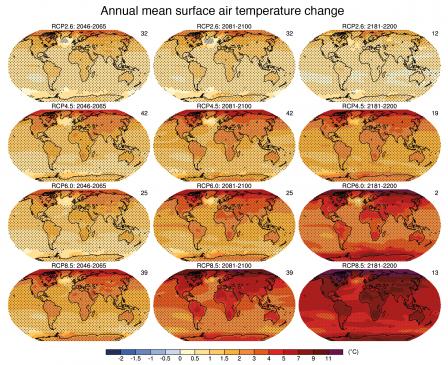Ocean currents, often described as the vast rivers coursing through our planet’s oceans, play a pivotal role in regulating the Earth’s climate. These currents, influenced primarily by wind patterns, the Earth’s rotation, and differences in water density, are integral to the distribution of heat, nutrients, and marine life across the globe. However, recent scientific analyses indicate that climate change is exerting significant pressure on these aquatic systems, leading to profound and potentially catastrophic alterations.
To comprehend the implications of climate change on ocean currents, one must first understand the various types of currents. Broadly categorized, they fall into surface currents and deep-water currents. Surface currents, driven predominantly by wind, operate in the upper 400 meters of the ocean and are essential in shaping regional climates—modulating temperatures and precipitation patterns. Conversely, deep-water currents, part of the global thermohaline circulation, are dictated by variations in water density, which is influenced by temperature (thermo) and salinity (haline). This complex interplay creates a conveyor belt of water that circulates globally, directly impacting not only marine ecosystems but also terrestrial weather conditions.
Climate change is disrupting these currents in distinct ways. One compelling phenomenon is the warming of the ocean surface. As global temperatures rise, the upper layers of the ocean absorb excess heat. This warming can lead to a reduction in the density of surface waters, which in turn disrupts the normal sinking process that fuels deep-water currents. The slowdown or even cessation of thermohaline circulation can lead to dramatic climate shifts. Regions like Western Europe could experience harsher winters, while areas near the equator may face severe droughts or flooding as weather patterns realign.
Alongside temperature changes, the melting of polar ice caps exacerbates the situation. The infusion of freshwater from melting glaciers dilutes seawater, further altering its salinity. This change can hinder the critical downward flow that drives deep-water currents, thereby diminishing the natural mixing of ocean layers. The consequences are multifaceted, including reduced nutrient availability for oceanic life, which in turn affects the entire marine food web.
The ramifications of altered ocean currents extend beyond marine environments. Changes in currents can exacerbate extreme weather events. For instance, as the Gulf Stream weakens, the northeastern part of North America may experience increased storm intensity and a rise in sea levels. Similarly, fluctuations in oceanic currents can impact monsoon patterns crucial for agriculture in regions heavily reliant on consistent rainfall. Disruption to these cycles can result in food shortages and economic instability, particularly in developing nations.
Another critical aspect to consider is the biological impact of changing ocean currents. The dynamics of marine ecosystems depend heavily on water circulation. Species migration patterns, breeding seasons, and even the distribution of plankton—the foundational component of the marine food pyramid—are influenced by ocean currents. With currents shifting, certain species may find themselves in unsuitable habitats, leading to potential declines in biodiversity. Coral reefs, often referred to as the oceans’ rainforests, are also under threat. Stressors from altered currents may lead to coral bleaching, which has devastating consequences for marine biodiversity.
To mitigate these challenges, global collaboration is imperative. International agreements and treaties that focus on reducing greenhouse gas emissions and promoting sustainability can play a vital role in alleviating the stress placed on ocean currents. Ocean conservation strategies, such as the establishment of marine protected areas, can foster resilience within marine ecosystems. Moreover, promoting scientific research helps to deepen our understanding of the intricate relationships between climate change and ocean dynamics, facilitating better-informed policy decisions.
Public awareness and education are equally crucial in addressing this pressing issue. By disseminating information about the importance of ocean currents and the effects of climate change, communities can be empowered to enact change at local and global levels. Individual actions, such as reducing plastic use, minimizing carbon footprints, and advocating for responsible seafood consumption, can contribute to a collective effort to protect our oceans.
In conclusion, the interplay between climate change and ocean currents is an intricate and alarming reality that demands immediate attention. As these currents shift, the repercussions are felt far beyond the oceanic realm, affecting weather patterns, biodiversity, and human livelihoods. A concerted effort that combines science, policy, and individual action is essential to preserve these vital systems that sustain life on Earth. Protecting ocean currents is not merely an environmental concern; it is an existential imperative that requires our collective resolve and action to ensure a stable and thriving planet for future generations.



